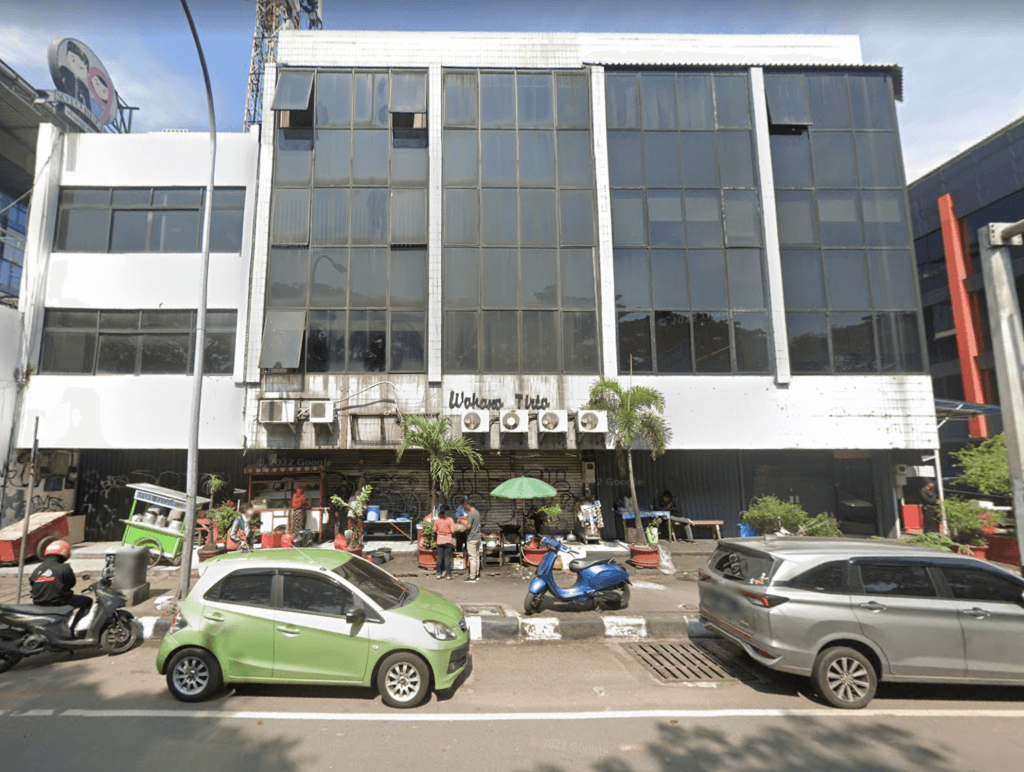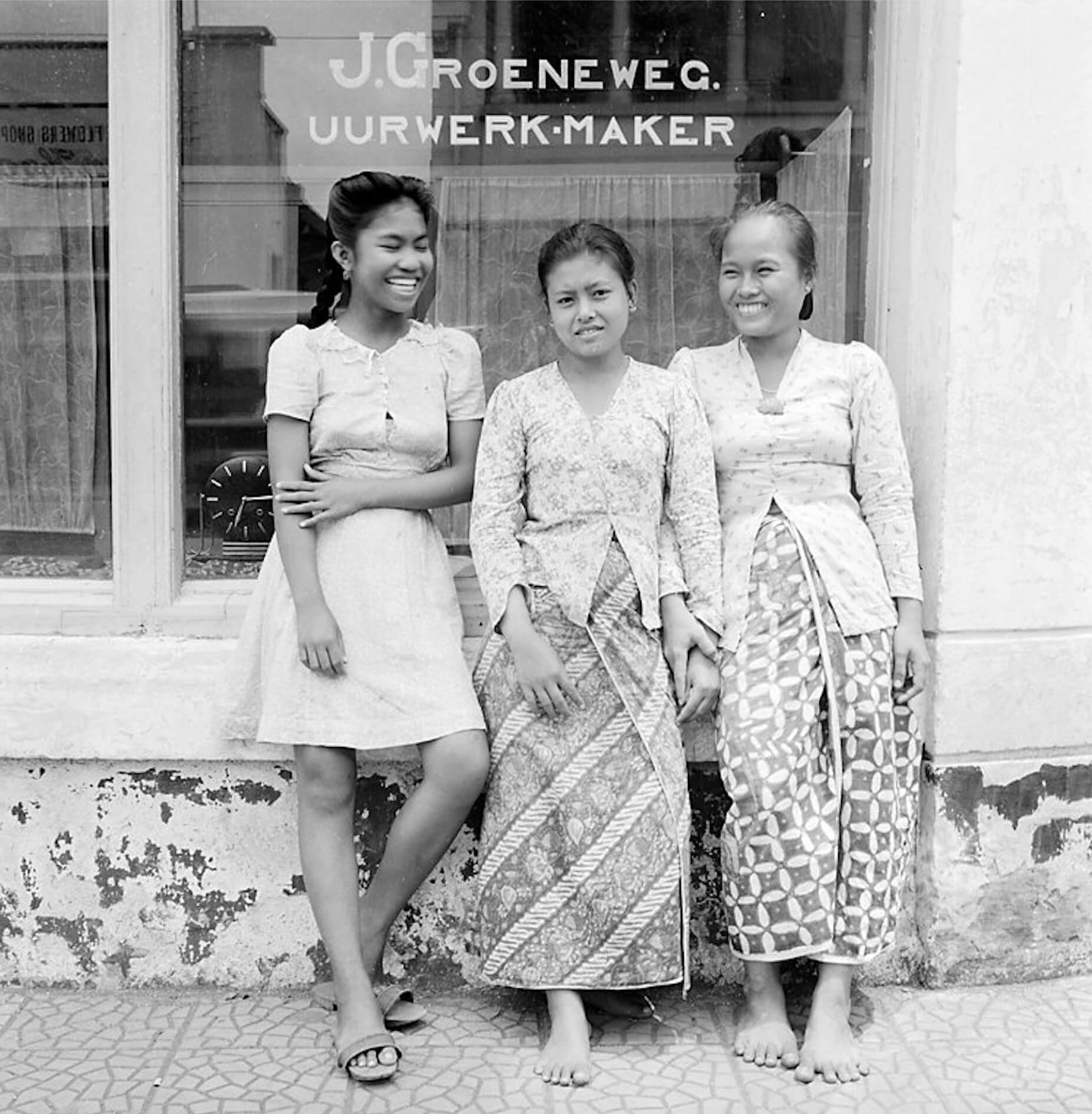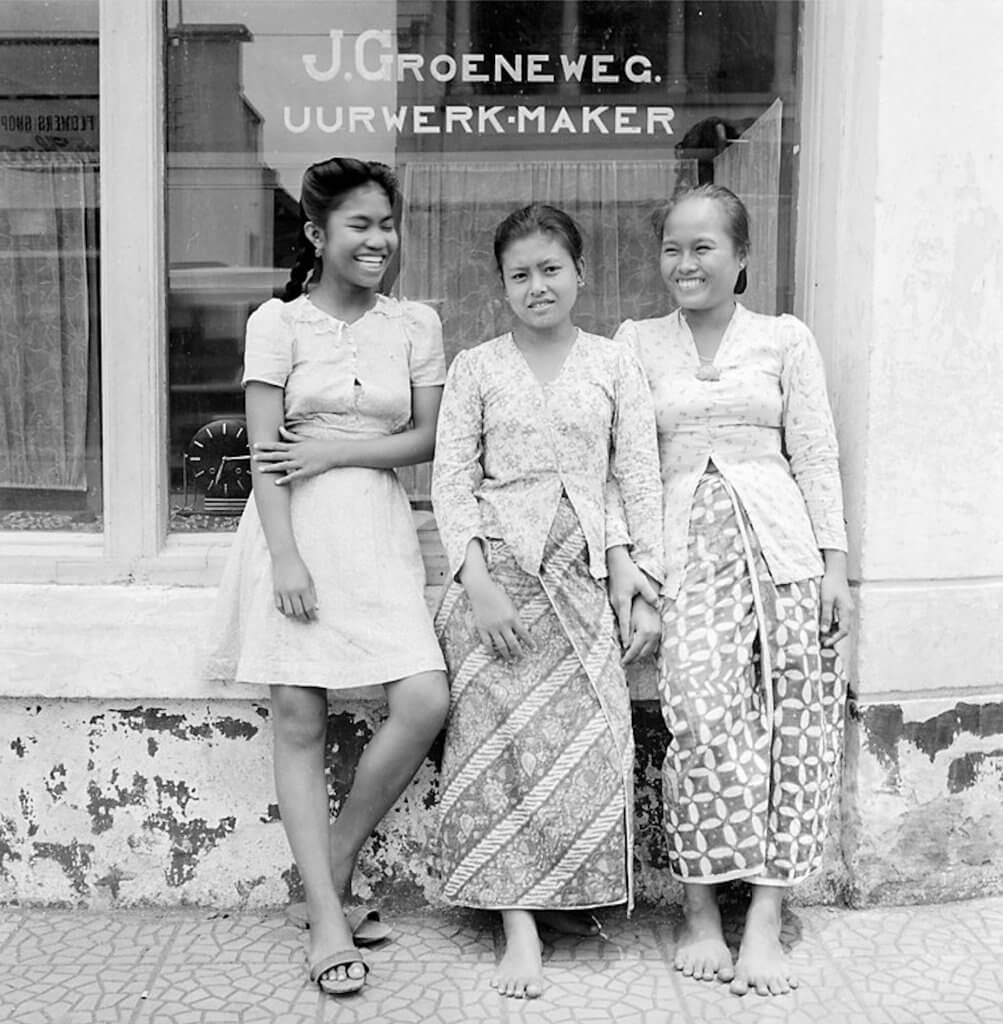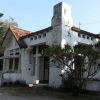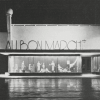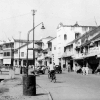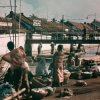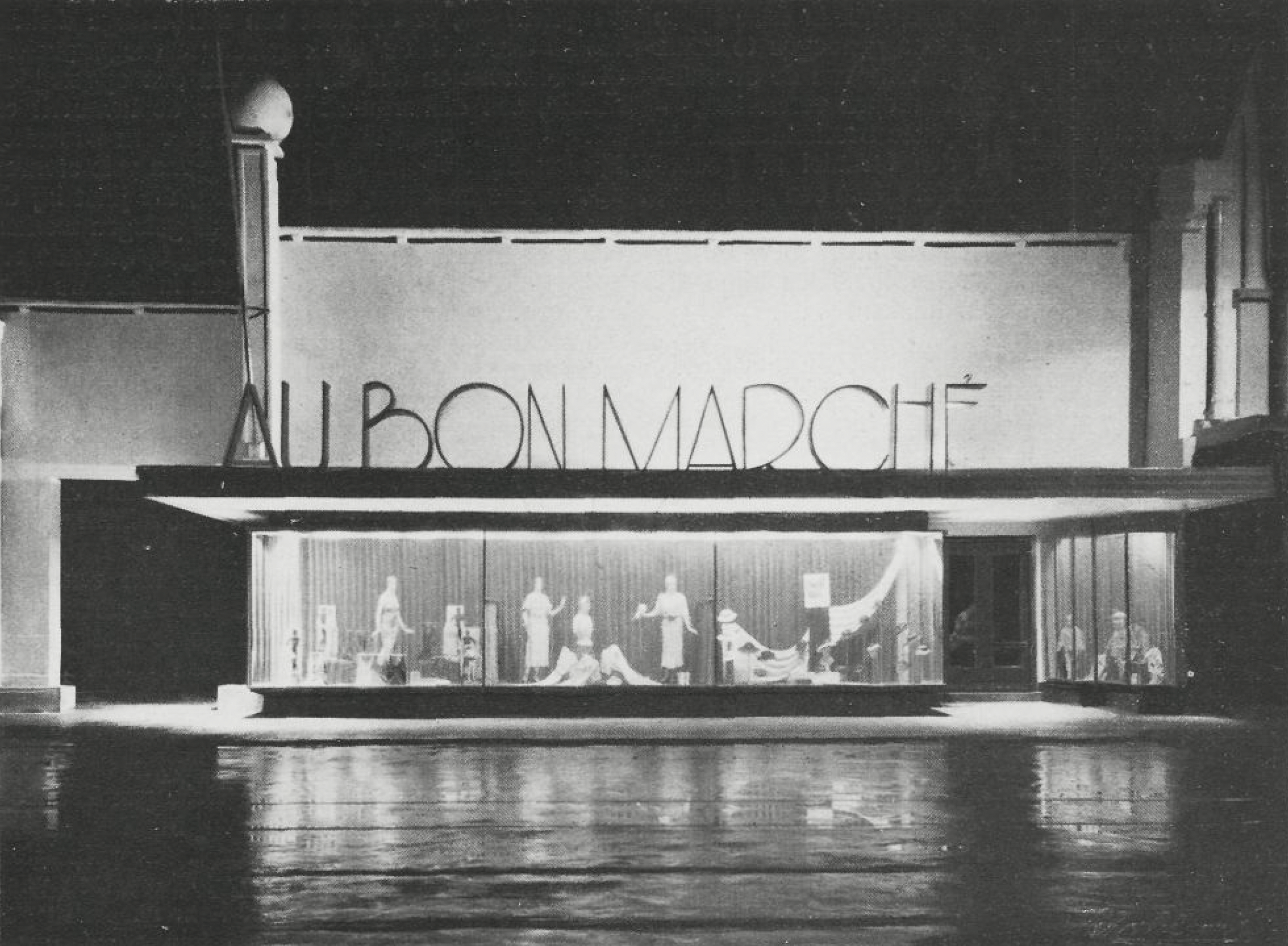
Jalan Majapahit 1936
Renowned architect J.F.L. Blankenberg (1888-1958) was responsible for many modern two-storey houses in Menteng, most notably the ones on Taman Suropati numbers 3 and 7, which are now the official residences of the American ambassador respectively the Governor of Jakarta. Blankenberg however, who had his office on Jalan Menteng Raya, also designed many offices and shopfronts in Batavia.
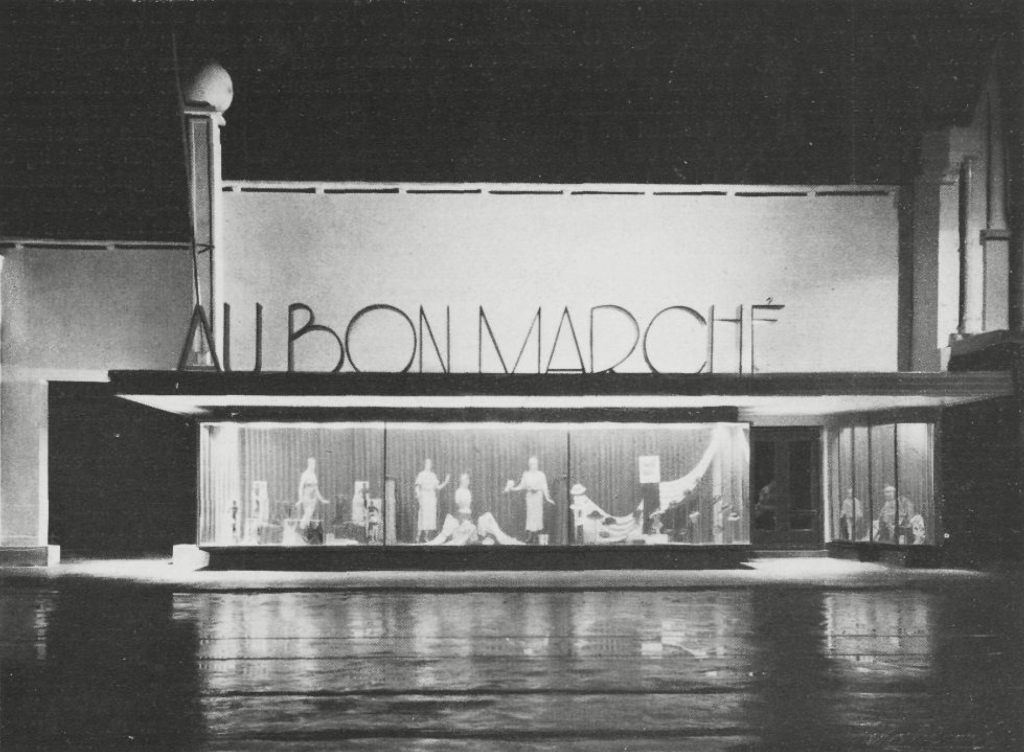
Olieslaeger jewellery
A stunning example is this modern facade of Au Bon Marché, a luxury fashion store at Rijswijkstraat 20 (now Jalan Majapahit). Au Bon Marché obtained its clothing collection from renowned department stores in France. In Batavia it was initially based on Noordwijk (now Jalan Juanda) and moved in 1921 to Rijswijkstraat (Jalan Majapahit) where it replaced the jewellery shop that was established in April 1850 by Victor Olieslaeger. Olieslaeger’s ancestors moved to Parapattan in the early 1920s, later to Noordwijk (Jalan Juanda) where the jewellery shop under that name survived until the 1970s.
Renovation
Blankenberg’s renovation was conducted in 1934. The shop window space was kept as large and transparent as possible; for this purpose the entrance had been moved to the right side, and the entire central facade and awning construction was carried by supporting points from the ceiling.
Interesting is also that during the 1930s there was an increased emphasis on so-called “light architecture”, the effect of evening lighting on design and appearance. As the magazine Lokale Techniek (Local Technique) mentioned in one of their 1936 articles: “Shopping in Batavia is mainly conducted in the early evening, as the morning hours are less suitable and the afternoon odours not bearable. Shopping is also mostly done by car, so that the shoppers generally get to view the storefronts from a greater distance and more clearly than it would be in shopping streets where pedestrians walk closer to the shopfronts”.
Loss of character
Jalan Majapahit has lost nearly all of its character when former society De Harmonie was demolished in 1985 and most shops on the opposite side (including the one that housed Au Bon Marché on number 20) obtained the typical modern Jakarta ‘ruko’ appearance. See the ‘now’ photo in the comment section.
[source photo: Lokale Techniek, issue 4 1936]
